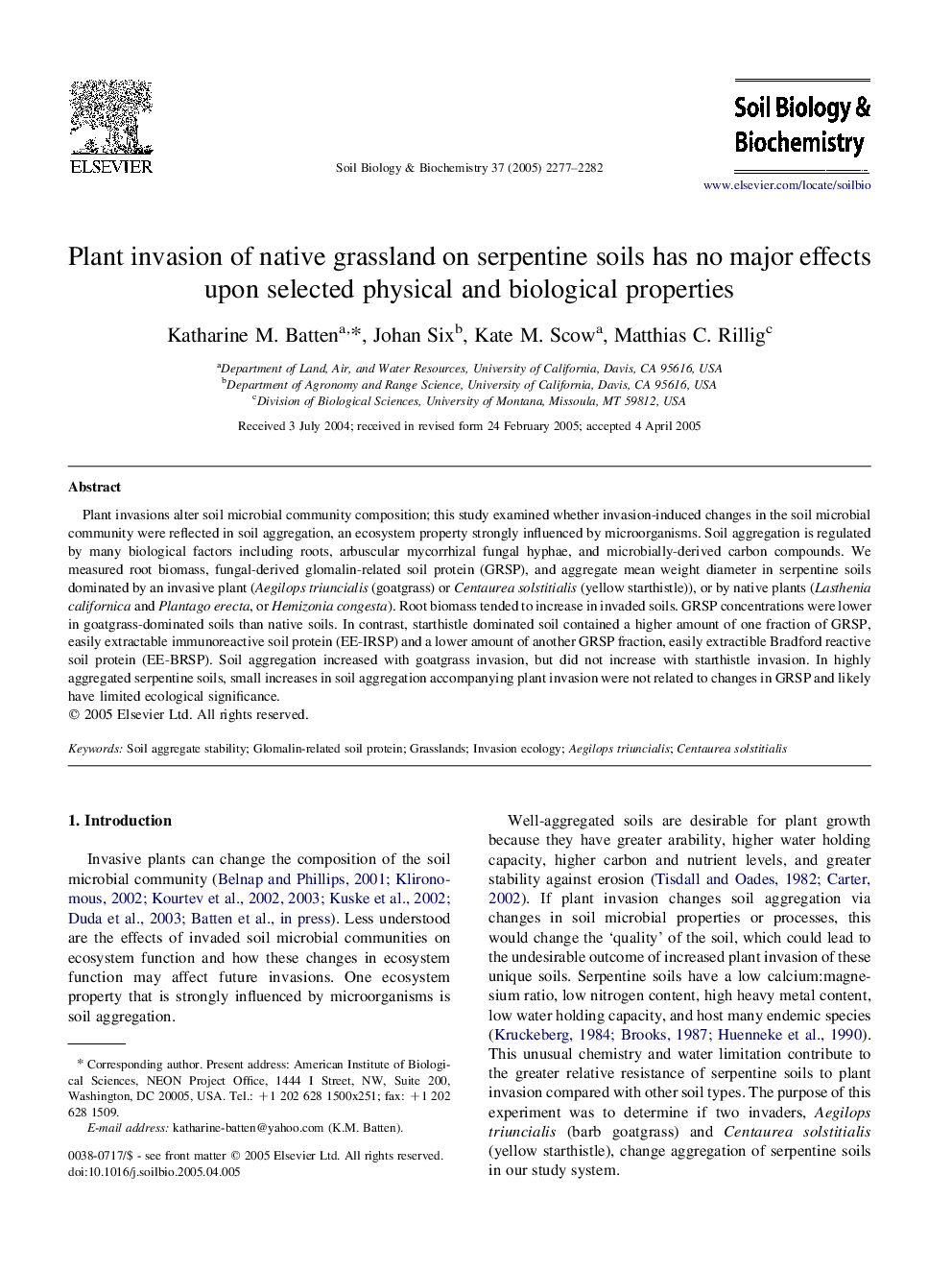| Article ID | Journal | Published Year | Pages | File Type |
|---|---|---|---|---|
| 2026510 | Soil Biology and Biochemistry | 2005 | 6 Pages |
Plant invasions alter soil microbial community composition; this study examined whether invasion-induced changes in the soil microbial community were reflected in soil aggregation, an ecosystem property strongly influenced by microorganisms. Soil aggregation is regulated by many biological factors including roots, arbuscular mycorrhizal fungal hyphae, and microbially-derived carbon compounds. We measured root biomass, fungal-derived glomalin-related soil protein (GRSP), and aggregate mean weight diameter in serpentine soils dominated by an invasive plant (Aegilops triuncialis (goatgrass) or Centaurea solstitialis (yellow starthistle)), or by native plants (Lasthenia californica and Plantago erecta, or Hemizonia congesta). Root biomass tended to increase in invaded soils. GRSP concentrations were lower in goatgrass-dominated soils than native soils. In contrast, starthistle dominated soil contained a higher amount of one fraction of GRSP, easily extractable immunoreactive soil protein (EE-IRSP) and a lower amount of another GRSP fraction, easily extractible Bradford reactive soil protein (EE-BRSP). Soil aggregation increased with goatgrass invasion, but did not increase with starthistle invasion. In highly aggregated serpentine soils, small increases in soil aggregation accompanying plant invasion were not related to changes in GRSP and likely have limited ecological significance.
